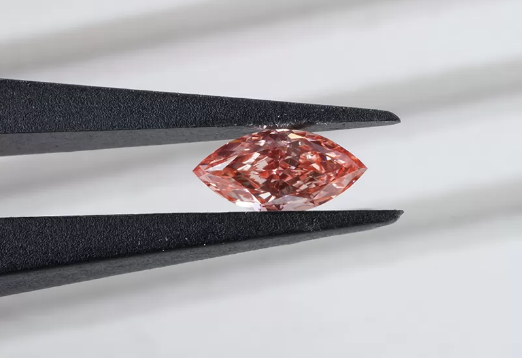Lab-grown diamonds, also known as synthetic or man-made diamonds, have gained popularity as ethical and sustainable alternatives to naturally mined diamonds. To ensure transparency and trust in the lab-grown diamond industry, certification and grading processes are essential. In this comprehensive guide, we will explore how lab-grown diamonds are certified and graded, highlighting the key aspects that consumers and professionals should understand.
The Importance of Certification and Grading
Certification and grading provide consumers with valuable information about the quality and characteristics of a lab-grown diamond. This information helps buyers make informed decisions, compare different diamonds, and assess their value. It also establishes standards and consistency in the lab-grown diamond market, similar to the natural diamond industry.
1. Laboratory Certification
The first step in the certification and grading process for lab-grown diamonds is determining their origin. Laboratory certification verifies whether a diamond is natural or lab-grown. The most recognized and respected gemological laboratories around the world are entrusted with this task. These laboratories use advanced techniques and instruments to differentiate between natural and lab-grown diamonds.
Identification Techniques:
1. Spectroscopy: Laboratory experts use spectroscopy to analyze a diamond's spectral characteristics. Lab-grown diamonds often exhibit certain spectroscopic features that distinguish them from natural diamonds.
2. Microscopy: Microscopic examination allows experts to identify growth patterns, inclusions, and features unique to lab-grown diamonds. Some lab-grown diamonds may show signs of specific growth methods.
3. Isotope Analysis: Isotope analysis can determine the carbon source of a diamond. Natural diamonds typically contain trace elements that differ from those found in lab-grown diamonds.
Once a diamond's origin is confirmed as lab-grown, it proceeds to the grading stage.

Pink Color 3.2×6.6mm 0.305ct Marquise Cut HPHT Lab Grown Diamond
2. Grading Process
The grading process for lab-grown diamonds involves assessing various attributes that influence a diamond's quality and value. These attributes include the "Four Cs": Carat weight, Color, Clarity, and Cut. Here's a closer look at each aspect:
Carat Weight:
Carat weight refers to the size of the diamond and is measured in carats. One carat is equivalent to 200 milligrams. Lab-grown diamonds come in various carat weights, and this factor significantly affects their value. Certified gemologists use precision scales to determine the carat weight of a lab-grown diamond.
Color:
Color assessment in diamonds involves grading the absence of color. The Gemological Institute of America (GIA) uses a grading scale from D (colorless) to Z (light yellow or brown) for both natural and lab-grown diamonds. Most consumers prefer lab-grown diamonds in the near-colorless to colorless range (D to J) for their visual appeal.
Clarity:
Clarity refers to the presence of internal or external imperfections, known as inclusions and blemishes, respectively. Lab-grown diamonds are graded for clarity using a scale developed by the GIA, ranging from Flawless (no inclusions or blemishes visible under 10x magnification) to Included (inclusions and/or blemishes visible to the naked eye).
Cut:
Cut quality significantly influences a diamond's sparkle and visual appeal. It includes factors like symmetry, proportions, and polish. Lab-grown diamonds are assessed for cut quality based on their proportions, angles, and facet alignments. A well-cut diamond reflects light effectively, creating brilliance and fire.
3. Grading Reports
Once the grading process is complete, a lab-grown diamond is issued a grading report, commonly referred to as a diamond certificate. This report contains detailed information about the diamond's characteristics and serves as an objective record of its quality. The grading report typically includes:
- Certificate Number: A unique identifier for the report.
- Diamond Shape and Measurements: The diamond's shape (e.g., round, princess, emerald) and its physical measurements (length, width, depth).
- Carat Weight: The diamond's exact weight in carats.
- Color Grade: The diamond's color grade on the GIA scale.
- Clarity Grade: The diamond's clarity grade on the GIA scale.
- Cut Grade: A description of the diamond's cut quality.
- Additional Grading: Some reports may include additional information about fluorescence, polish, and symmetry.
- Inscription: If applicable, information about laser inscriptions on the diamond's girdle.
- Comments: Any noteworthy observations or remarks about the diamond's characteristics.
4. Inscription and Laser Marking
Many lab-grown diamonds are inscribed with a laser mark on the girdle, which is the outer edge of the diamond. This microscopic inscription typically includes the certificate number or a unique identifier. The purpose of laser inscriptions is to link the diamond to its grading report, providing an additional layer of verification and security for consumers.
5. Digital Reports and Blockchain Technology
Innovations in technology have introduced digital diamond reports and blockchain-based solutions to enhance transparency and traceability in the diamond industry. Some laboratories offer digital versions of grading reports, allowing consumers to access detailed information online.
Blockchain technology is also being employed to create immutable records of a diamond's origin, characteristics, and ownership history. This technology can offer consumers greater confidence in the authenticity and ethical sourcing of their lab-grown diamonds.
Conclusion
Certification and grading are critical steps in ensuring transparency, quality, and value in the lab-grown diamond industry. Consumers can rely on reputable gemological laboratories to verify the origin of lab-grown diamonds and provide detailed grading reports that include information about carat weight, color, clarity, and cut. Additionally, modern advancements in technology, such as digital reports and blockchain, contribute to further enhancing the integrity and traceability of lab-grown diamonds, making them a reliable and ethical choice for consumers seeking exquisite and sustainable gems.
If you want to know more information about lab-grown diamonds, please click on the image below to get a free quote:



 Lab Grown Emerald
Lab Grown Emerald


